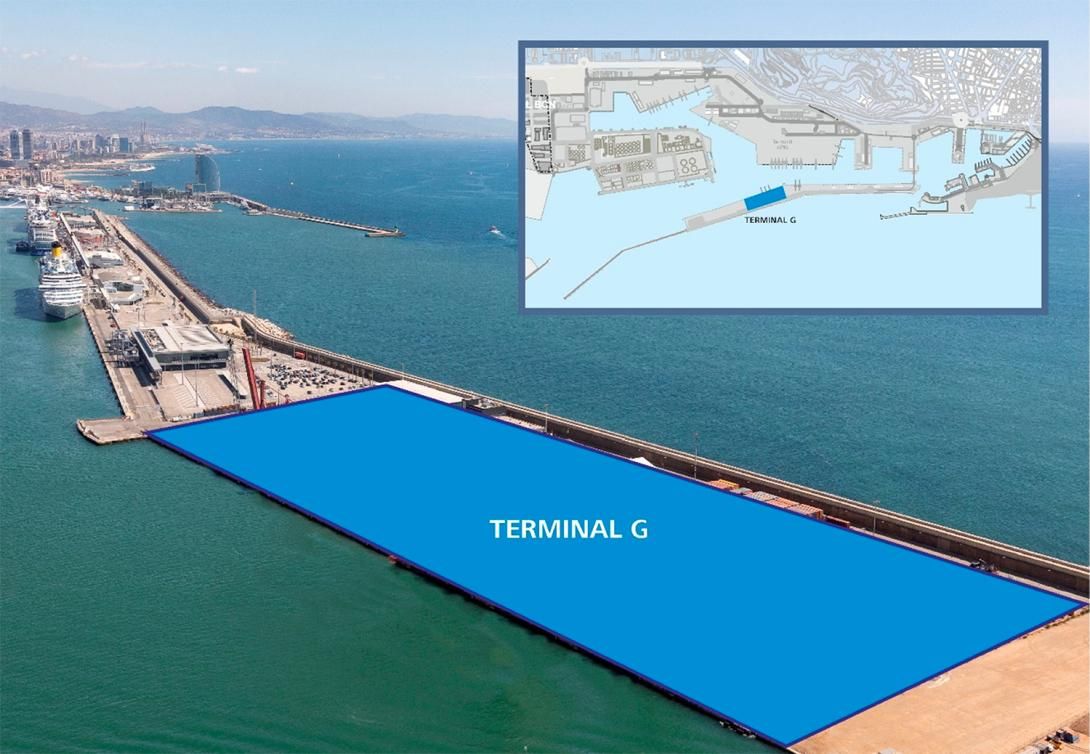The Port of Barcelona awards the construction and operation of the future cruise terminal G
The tendered bid exceeds all the sustainability requirements of the concession and will help improve passenger mobility.
The terminal is designed to handle home port traffic

Today the Port of Barcelona Management Board approved the awarding of the construction and operation of the future cruise terminal G of the Adossat wharf to Catalonia Cruise Terminal G, SL, a joint venture of Royal Caribbean Group and Cruise Terminals International, CTI.
Despite the fact that it was the only bid presented in this public call for tenders, the project was rated excellent by the technical staff in charge of the tender: they highlighted its commitment to energy and environmental sustainability, which incorporates a reservation of spaces for the onshore power supply (OPS) systems currently being installed on Adossat wharf, which will allow cruise ships to connect to the electricity grid once docked, thus eliminating emissions.
Catalonia Cruise Terminal G anticipates an investment of over EUR 85 million and expects the new terminal to become operational in the spring of 2027, once the South Terminal of the WTC is closed in 2026. This is the last terminal to be set up on Adossat wharf, which complies with the agreements reached by the Port of Barcelona and the City Council in 2018 limiting the number of terminals to seven.
A sustainable terminal
The terminal has been designed to maximise energy efficiency and incorporates renewable energy solutions to minimise its impact on the surrounding area. The project includes power generation using photovoltaic panels and other types of installations, which will allow the terminal to be a zero-emissions building.
The future terminal is designed to serve and boost home port traffic, following the Port of Barcelona’s strategy to increase this type of traffic, which provides more added value for the city. Thus, one noteworthy aspect of the project is the configuration of efficient, comfortable and sustainable mobility for passengers, both within the terminal and in its connectivity with the city/airport/train.
The spaces of the future Terminal G have been designed to guarantee a smooth operation for passengers. This aspect is particularly important for a terminal designed for the home port passengers, who embark and disembark in Barcelona, a strategy that Royal Caribbean is betting on in the Catalan capital.
Start of the tender to build the embankment of the enclosures to store dredging material
Today, the Port of Barcelona Management Board also approved the start of the tender process to build a maritime embankment out of rip-rap, which will constitute the first area for depositing the materials from the dredging of the navigation channel that will be used for works projects underway, such as the enlargement of the Adossat wharf, and future projects like the new berthing points of the Energy wharf.
The rip-rap will delimit an area of 44.7 hectares between the South seawall and the Prat wharf, with a depth of up to 16 metres, in which these dredging materials will be deposited. The work also includes building a terrace for collecting and managing the material. This action is an example of a circular economy in the Port, enabling the recycling of materials and avoiding unnecessary transport to other locations.
The Port of Barcelona launched this tender after the Ministry for Ecological Transition and Demographic Challenge issued the favourable report of the Environmental Impact Statement (EIS) of the future sites on 29 January this year.
The tender's basic budget is EUR 94 million, excluding VAT, and the performance period is 27 months.



